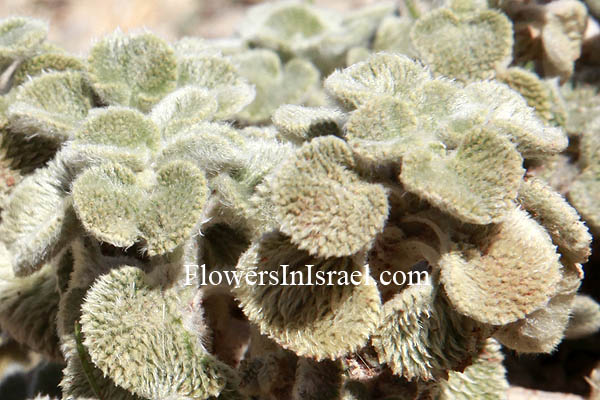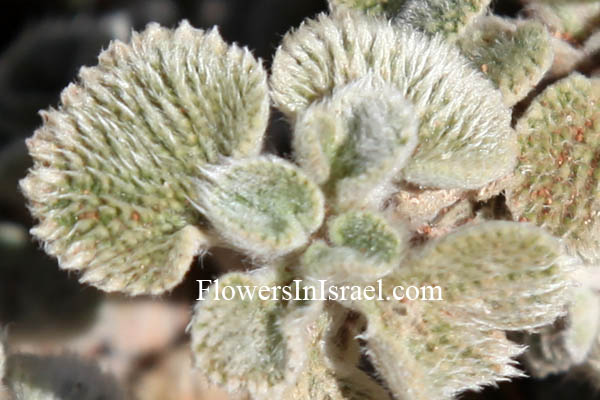Lebanon white-horehound,
Hebrew: מרמר הלבנון, מרוביון הלבנון, Arabic: الفراسيون الحرموني, الفراسيون الكروي نويع اللبناني
| Scientific name: | Marrubium libanoticum Boiss. | |
| Synonym name: | Marrubium globosum subsp. libanoticum (Boiss.) P.H.Davis, Marrubium hermonis Boiss. | |
| Common name: | Lebanon white-horehound | |
| Hebrew name: | מרמר הלבנון, מרוביון הלבנון | |
| Arabic name: | الفراسيون الحرموني, الفراسيون الكروي نويع اللبناني | |
| Family: | Labiatae / Lamiaceae, Mint Family, שפתניים |

Location: Mount Hermon |
| Life form: | Hemicryptophyte | |
| Stems: | Up to 35cm; ascending, woolly | |
| Leaves: | Opposite, 1-1.5cm, circular or ovate, margin slightly scalloped | |
| Inflorescence: | Many-flowered, in remote axillary dense-flowered, spherical whorls | |
| Flowers: | Corolla whitish | |
| Fruits / pods: | Nutlets, hairless | |
| Flowering Period: | June, July, August, September, October | |
| Habitat: | Tragacanth shrub vegetation (Oro-Mediterranean) | |
| Distribution: | Montane vegetation of Mt. Hermon | |
| Chorotype: | Oro Mediterranean | |
| Summer shedding: | Perennating |

Location: Mount Hermon Derivation of the botanical name: Marrubium is said to be derived from Maria urbs, an ancient town of Italy. Other authors derive its name from the Hebrew marrob (a bitter juice), and state that it was one of the bitter herbs which the Jews were ordered to take for the Feast of Passover. libanoticum, of Mount Lebanon. globosum, globos, spherical. The Hebrew name: מרמר ,מרוביון, marrubion, a transliteration from the scientific name; מרמר, marmar from mar:to be bitter.
|